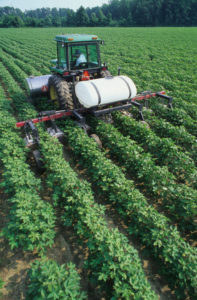Dicamba Label Refresher
go.ncsu.edu/readext?589525
en Español / em Português
El inglés es el idioma de control de esta página. En la medida en que haya algún conflicto entre la traducción al inglés y la traducción, el inglés prevalece.
Al hacer clic en el enlace de traducción se activa un servicio de traducción gratuito para convertir la página al español. Al igual que con cualquier traducción por Internet, la conversión no es sensible al contexto y puede que no traduzca el texto en su significado original. NC State Extension no garantiza la exactitud del texto traducido. Por favor, tenga en cuenta que algunas aplicaciones y/o servicios pueden no funcionar como se espera cuando se traducen.
Português
Inglês é o idioma de controle desta página. Na medida que haja algum conflito entre o texto original em Inglês e a tradução, o Inglês prevalece.
Ao clicar no link de tradução, um serviço gratuito de tradução será ativado para converter a página para o Português. Como em qualquer tradução pela internet, a conversão não é sensivel ao contexto e pode não ocorrer a tradução para o significado orginal. O serviço de Extensão da Carolina do Norte (NC State Extension) não garante a exatidão do texto traduzido. Por favor, observe que algumas funções ou serviços podem não funcionar como esperado após a tradução.
English
English is the controlling language of this page. To the extent there is any conflict between the English text and the translation, English controls.
Clicking on the translation link activates a free translation service to convert the page to Spanish. As with any Internet translation, the conversion is not context-sensitive and may not translate the text to its original meaning. NC State Extension does not guarantee the accuracy of the translated text. Please note that some applications and/or services may not function as expected when translated.
Collapse ▲
A tractor sprays a field of crops.
Before spraying dicamba formulations, know the label requirements.
Application window. This portion was updated for 2019. For dicamba-tolerant soybeans, only apply from emergence through 45 days after planting or until R1, whichever is first. When it comes to dicamba-tolerant cotton, only apply through 60 days after planting or until mid-bloom.
Spray time. Applications can be made from one hour after sunrise until two hours before sunset.
Endangered species. This is new to the label. Fields identified as having endangered species will require a 110-foot downwind buffer and a 57-foot buffer on all other sides of the field. Check the EPA website to see if your area has these additional use restrictions.
Number of applications. Cotton producers can only spray two postemergence applications.
Certified Applicators. Not everyone can buy or use Dicamba herbicide technology, only a certified applicator. Also, individuals operating under a certified applicator may no longer buy or use Dicamba based products.
Spray volume. The minimum spray volume is now 15 gallons per acre.
Sensitive areas or crops and residential areas. There was some confusion on what constitutes “sensitive” on the label. Bodies of water and nonresidential, uncultivated areas that harbor sensitive plant species are considered a “sensitive area.” Any food, forage or plants grown for sale or consumption is considered a “sensitive crop.” These areas have a downwind buffer requirement and wind condition that must be met to spray. Residential areas include houses and apartment complexes. Applicators cannot apply when the wind is blowing in the direction of any of these areas.
Non-sensitive areas. This definition was expanded to include areas such as roadside rights-of-way or ditches. It also includes land that is mowed or managed next to a field.
Record-keeping. Reports must be created within 72 hours of spraying. This requirement was 14 days but has been moved up. Planting date must be recorded. The report needs to include how an applicator calculated buffer distance.
Rainfall restriction. Dicamba products may not be applied if rain is expected in 24 hours that will exceed the soil field capacity.
Spray solution. It is recommended that applicators add a buffering agent if the solution pH is less than 5.
Training. All applicators are required to complete training annually. States still determine how the training requirement is met.




